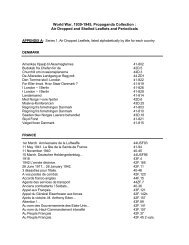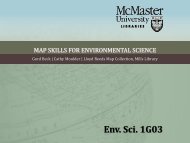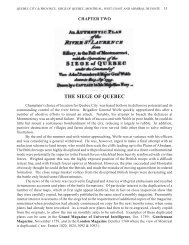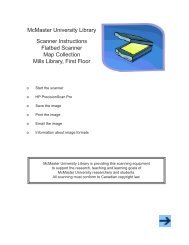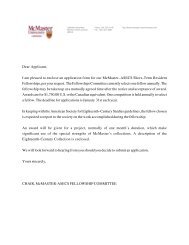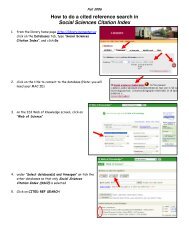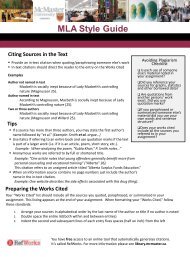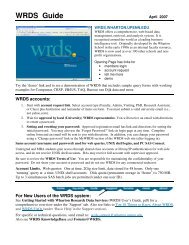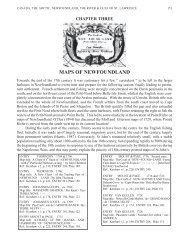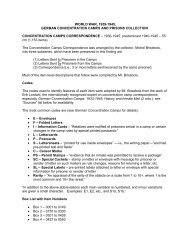SRTM30 Documentation (best viewed with monospaced font, such ...
SRTM30 Documentation (best viewed with monospaced font, such ...
SRTM30 Documentation (best viewed with monospaced font, such ...
You also want an ePaper? Increase the reach of your titles
YUMPU automatically turns print PDFs into web optimized ePapers that Google loves.
the radar beam by terrain.<br />
This 'targeted landmass' consisted of all land between 56 degrees south and<br />
60 degrees north latitude, which comprises almost exactly 80% of the total<br />
landmass.<br />
1.1 Generation of <strong>SRTM30</strong><br />
SRTM radar echo data were processed into elevation information in a systematic<br />
fashion using the SRTM Ground Data Processing System (GDPS) supercomputer<br />
system at the Jet Propulsion Laboratory. Elevation data were mosaiced into<br />
more than 14,000 one degree by one degree cells and formatted according<br />
to the Digital Terrain Elevation Data (DTED) specification for delivery to<br />
NIMA, who is editing it and using it to update and extend their DTED<br />
products.<br />
Sample spacing for the fundamental data set is 1 arc-second in latitude<br />
and longitude (approximately 30 meters at the equator), consistent <strong>with</strong><br />
NIMA's existing DTED Level 2 product. By agreement between NIMA and NASA this<br />
product is under control of NIMA and is subject to limited distribution,<br />
using procedures similar to those for the existing DTED products.<br />
A second product, <strong>with</strong> sample spacing of 3 arc-seconds was generated by<br />
a 3x3 averaging of the 1 arc-second data, and is being systematically<br />
released to the public on a continent-by-continent basis. These 3<br />
arc-second data were then further averaged 10x10 to produce 30 arc-second<br />
data commensurate <strong>with</strong> GTOPO30.<br />
Since the SRTM elevation data delivered to NIMA are unedited, they contain<br />
occasional voids, or gaps, where the terrain lay in the radar beam's shadow<br />
or in areas of extremely low radar backscatter where an elevation solution<br />
could not be found. Globally these voids amount to no more than 0.15% of<br />
the SRTM data, but in some regions <strong>such</strong> as the Himalayas or northern Africa<br />
they are extensive enough to be evident even after the 10x10 averaging.<br />
To construct <strong>SRTM30</strong>, mosaics were constructed at 30 arc-second spacing in<br />
tiles that matched the GTOPO30 tiles. Then the results were combined <strong>with</strong><br />
GTOPO30 <strong>such</strong> that each sample contains an SRTM data point where SRTM data<br />
were valid, or GTOPO30 data where the SRTM data were void. Since the SRTM<br />
mission was only able to map up to approximately 60.25 degrees north<br />
latitude values above this point are completely from GTOP30.<br />
The geodetic reference for SRTM data is the WGS84 EGM96 geoid as documented<br />
at http://www.nima.mil/GandG/wgsegm/, and no attempt was made to adjust the<br />
vertical reference of either data set during the combination.



